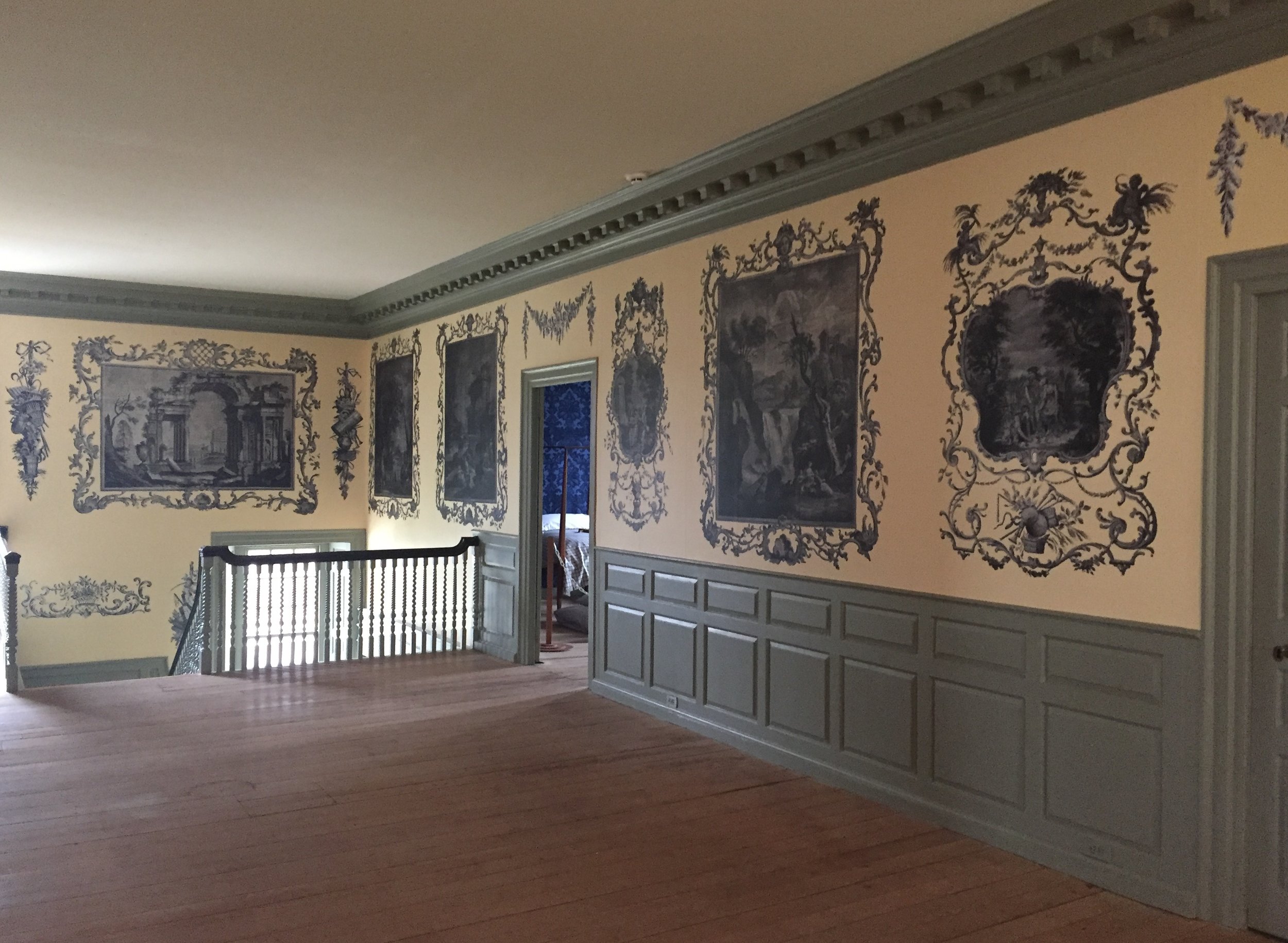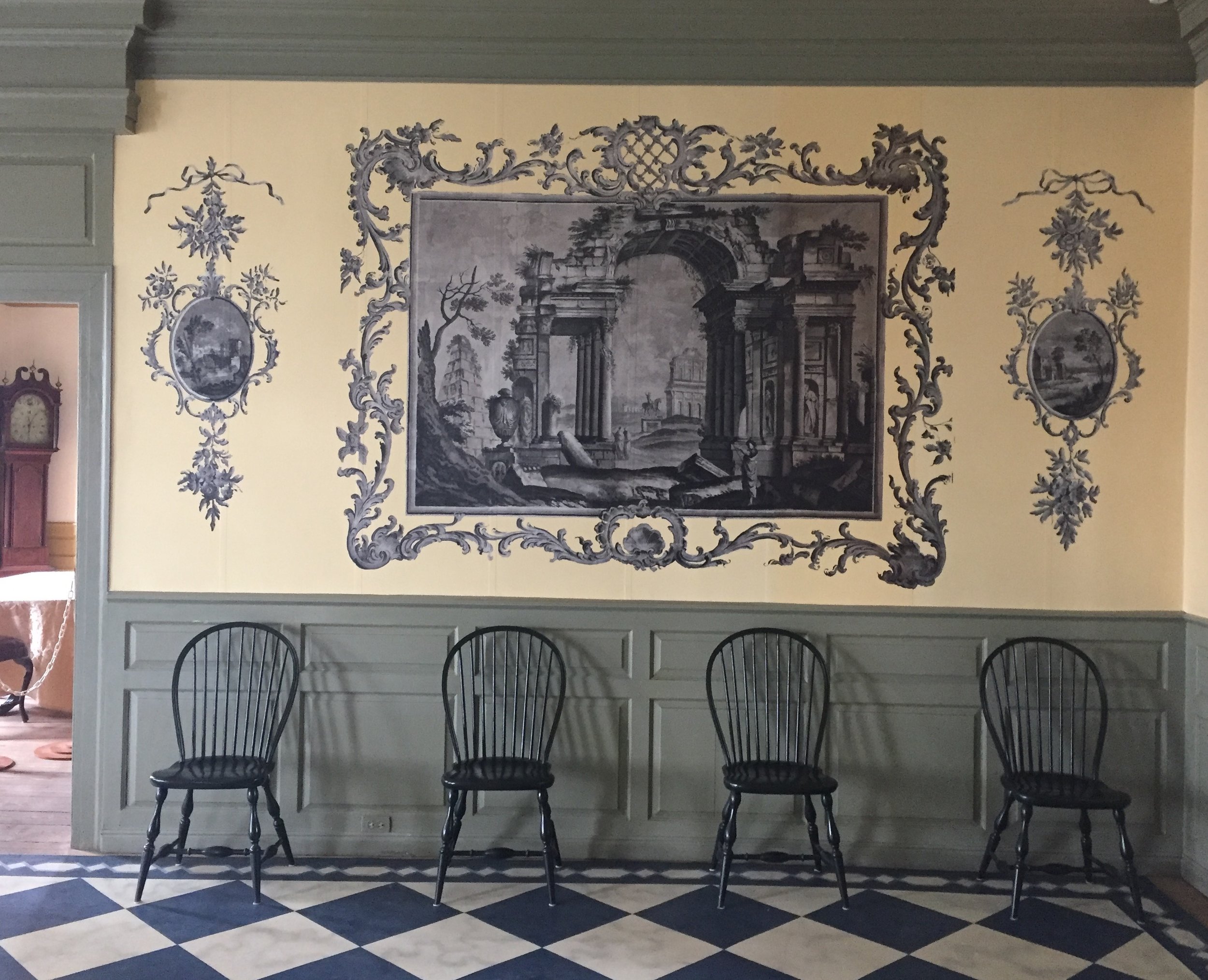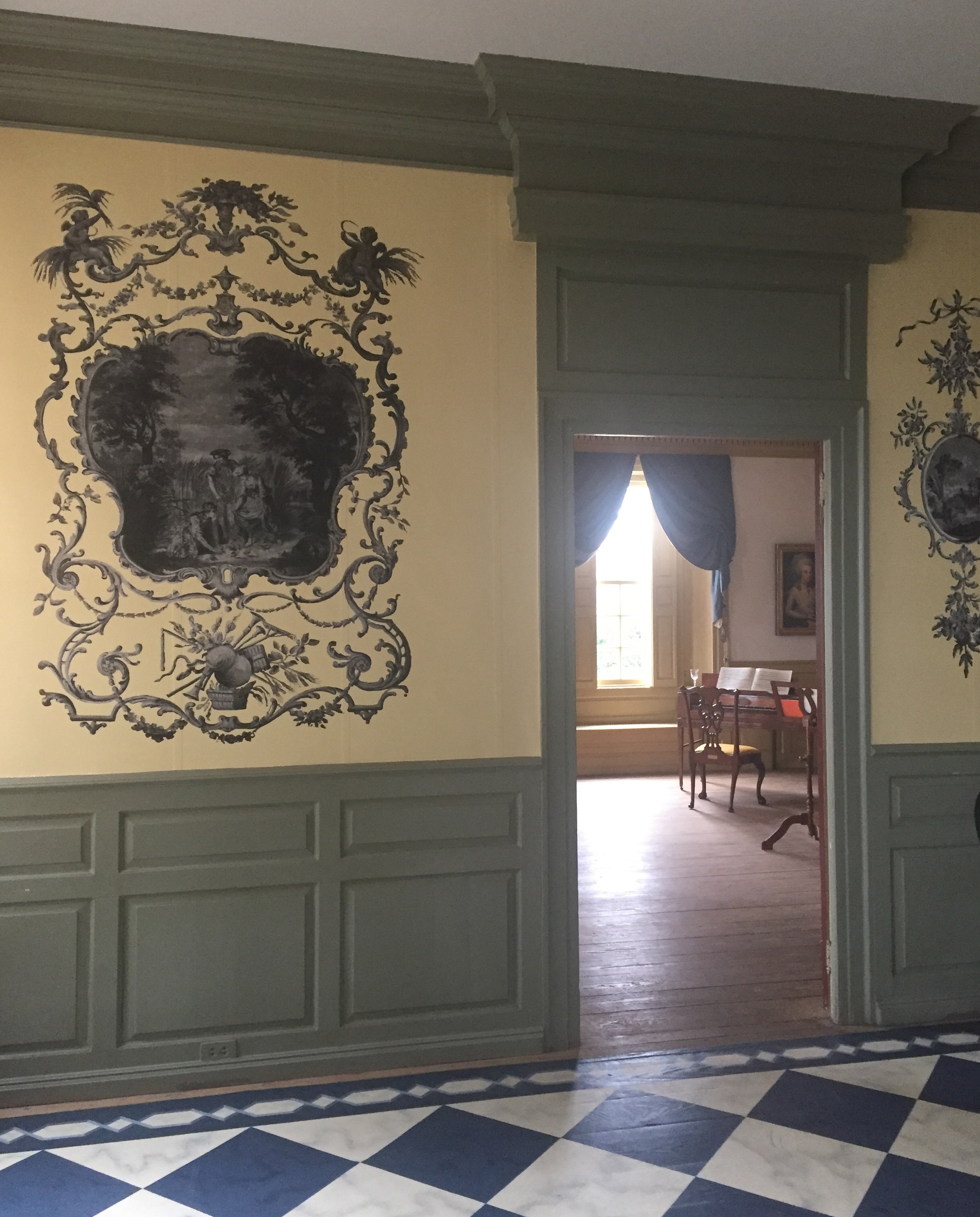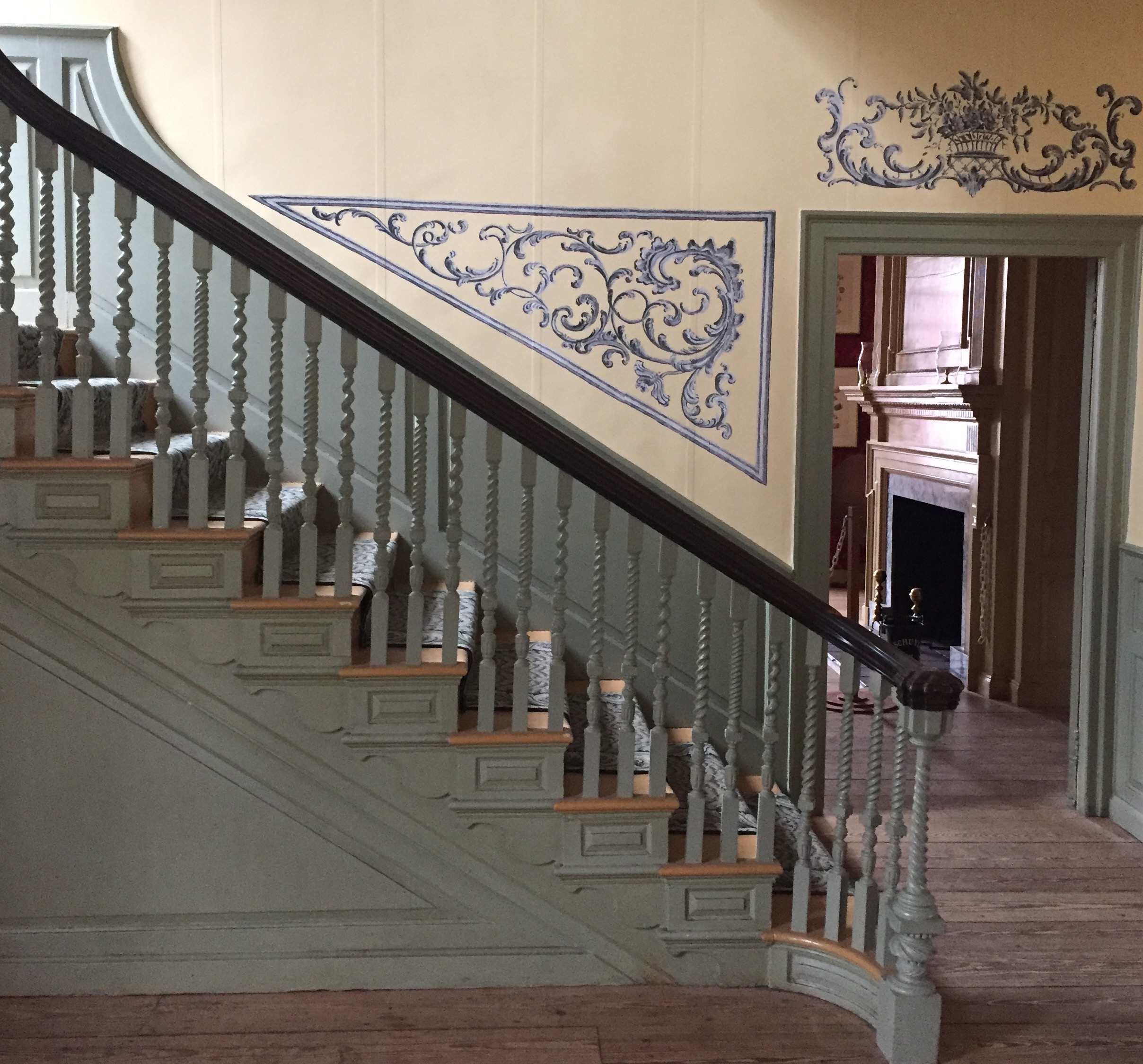When Philip Schuyler (1733-1804) began building his estate near Albany, NY in 1761, he was determined to make it a suitable home for his growing family as well as for his stature as a gentleman of wealth and property.
Then called The Pastures (now called the Schuyler Mansion), the brick house was to be elegant and substantial in its Georgian symmetry, and sit grandly on eighty acres high on the hill overlooking the Hudson (or North) River so that visitors coming to Albany from New York City would be sure to see it first. Twenty-eight-year-old Philip wanted his house to be as impressive inside as it was commanding from the exterior, and while the house was being built, he combined a business trip to London with something of a decorating spending spree.
Among Philip's most impressive acquisitions was the scenic wallpaper he bought for the upstairs and downstairs halls. Unlike most 18thc wallpaper which was block-printed, or "stampt", this paper was painted entirely by hand in tempera paint in shades of grey - en grisaille was the term - to mimic engraved prints. In fact, the entire scheme of the papers was an elaborate trompe l'oeil to represent framed paintings and cartouches, all custom designed for the walls and spaces they would occupy.
This was, of course, extremely expensive, and as much a sign of Philip's deep pockets as his taste. The wallpaper he ordered featured romantically scenic landscapes by the Italian painter Paolo Panini, and was called "Ruins of Rome." The "Ruins of Rome" wallpaper was so rare and costly that there are only two examples of it known to survive in America: in the Jeremiah Lee Mansion in Marblehead, MA, and in the Metropolitan Museum of Art, NY, which has installed the paper taken from the now-demolished Rensselaerwyck, the nearby home of Stephen Van Rensselaer II, and later, of Philip's third daughter, Margarita "Peggy" Schuyler Van Rensselaer. All status and expense is a matter of degrees, however; the scenic wallpaper was inspired by aristocratic rooms like this one from Ditchley Park, Oxfordshire, UK, which features real Panini paintings in gilded, carved frames and Genoese cut velvet on the walls.
But for colonial New York, the wallpaper was grand indeed. Philip became a general during the American Revolution, and the wallpaper formed the first impression of the house's many illustrious guests during that era, including Benjamin Franklin, the Marquis de Chastellux, the Marquis de Lafayette, and George and Martha Washington, as well as gentlemanly British "prisoners" such as Major John Andre and General John Burgoyne.
Oh, and there was that other young officer who ended up marrying the Schuylers' second daughter Elizabeth: Alexander Hamilton. (Eliza often returned to The Pastures throughout her married life, and the house is something of a secondary character in my new novel, I, Eliza Hamilton.)
Tastes change, however, and cities and families change, too. After General Schuyler's death in 1804, the family sold The Pastures, and the land around it was divided and developed. Albany grew to surround the house, which passed through various owners before finally being purchased by the State of New York and opened as a historic site in 1917.
Philip's original scenic wallpaper has long since been removed and lost. But over the last few years, the state's Peebles Island Resource Center, led by Rich Claus and Erin Moroney, has painstakingly recreated a high-quality digital reproduction of the "Ruins of Rome" based on the wallpaper from both the Lee Mansion and the Van Rensselaer installation in the Met, but redesigned to fit the Schuyler Mansion's walls and woodwork as perfectly as the original once did. The new wallpaper was completed and hung as part of the Mansion's centennial celebration this year. As you can see from these photos (please click on the images above for the slideshow), it's a glorious recreation, ready to impress modern visitors just like their 18thc counterparts.
Many thanks to Danielle Funiciello of the Schuyler Mansion, and social, cultural, & architectural historian Judy Anderson (former curator of the Jeremiah Lee Mansion & author of Glorious Splendor: the 18thc Wallpaper in the Jeremiah Lee Mansion) for their help with this post.
The Schuyler Mansion is open for tours; please check their Facebook page or call for days and hours.
All photographs ©2017 Susan Holloway Scott.
Read more about Eliza Schuyler and Alexander Hamilton in my latest historical novel, I, Eliza Hamilton, now available everywhere.





